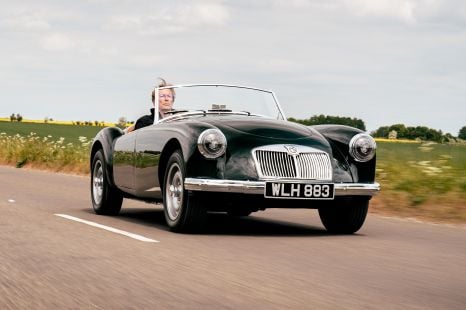

Angus MacKenzie
5 Days Ago
While it's not the first luxury electric SUV, the RZ is Lexus' first dedicated EV and faces stiff competition from Germany and Korea.
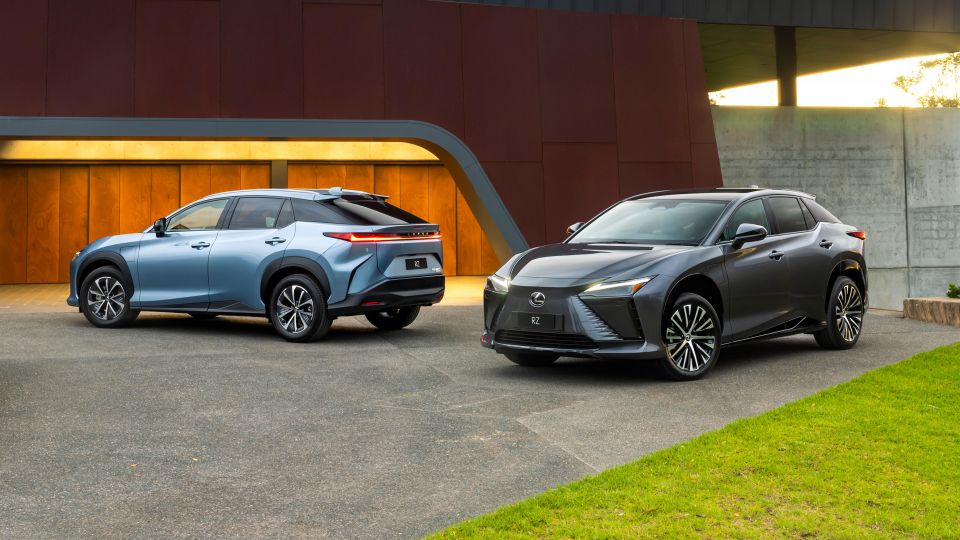
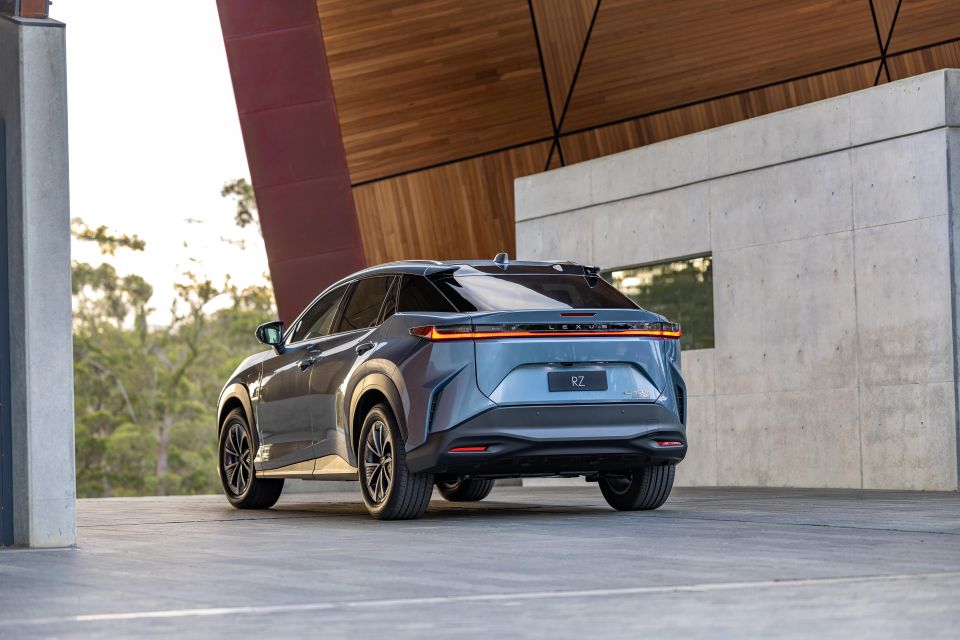

Quickly see how this car stacks up against its competition. Select any benchmark to see more details.
Take advantage of Australia's BIGGEST new car website to find a great deal on a Lexus RZ.
The all-new Lexus RZ electric SUV has a lot to live up to.

The Japanese brand was once the pioneer of hybrid technology with the launch of the RX400h hybrid back in 2006; but unlike the Toyota Prius, which arguably spearheaded an era of electrification well ahead of its time with its simple yet effective nickel–metal hydride battery system, the move to battery electric vehicles (EVs) has been slow for both Lexus and parent company Toyota.
Lexus isn’t alone in the luxury space to have been beaten to the punch by the likes of Tesla, but it has been beaten by the Germans and the Koreans as well.
This is why the Lexus RZ is such an important car for the brand. It needs to be class-leading and it needs to prove why it was worth the wait. For it to succeed it needs to be a genuine alternative to what is currently on offer to attract a new tech-savvy and (somewhat) environmentally-friendly audience to the luxury car maker.
As the first all-electric vehicle from Toyota’s luxury brand, and one that makes use of the new e-TNGA platform, it’s important to point out that it shares plenty of its underpinnings with the Toyota bZ4X and Subaru Solterra twins. In many ways, the design similarities are also hard to hide – you can read our design exposé of the two cars here.
On its own as a design experiment, the Lexus RZ is a fantastically beautiful car. The evolution of the brand’s spindle grille and the way it has evolved into the current iteration is definitely a positive move, and while some may not love its looks, you can’t criticise it for not being modern and sophisticated.
Where it falls a little short, however, is not only is it almost double the cost of Tesla Model Y (which is arguably not appointed in the same luxurious manner), but it’s also substantially more expensive than even BMW’s iX3, which is a terrific car of similar size that offers more range – albeit two-wheel drive, not all-wheel drive like the RZ – and better technology.
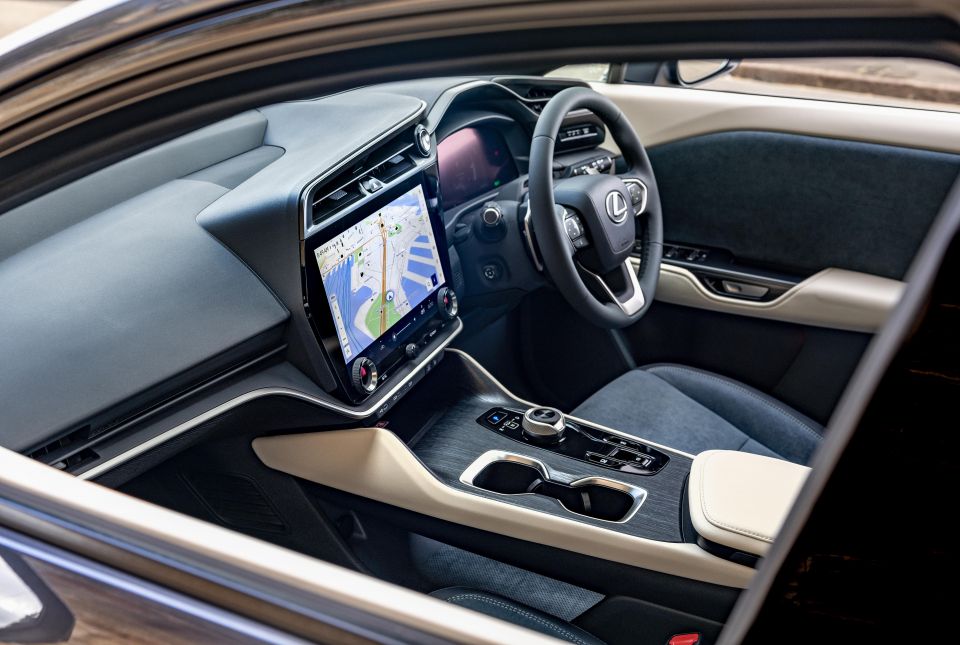
Lexus Australia was very keen to emphasise the RZ is a Lexus at heart regardless of being a pure battery electric vehicle. This is true, but unfortunately it also means while it carries the latest that Lexus has to offer in terms of infotainment and technology, it falls well short of what is currently in this price point from the Germans and substantially less in Tesla’s case.
So there are some question marks over the Lexus RZ’s positioning, but we suspect with market conditions and supply and demand (there are 500 of these coming in the first 12 months with 150 already accounted for), there may potentially be some wiggle room on that price point with your Lexus dealer as well. Lets go into it then.
The Lexus RZ is available in two trim levels initially, with pricing starting at $123,000 before on-roads for the RZ450e Luxury, and extending to $135,000 before on-roads for the RZ450e Sports Luxury.
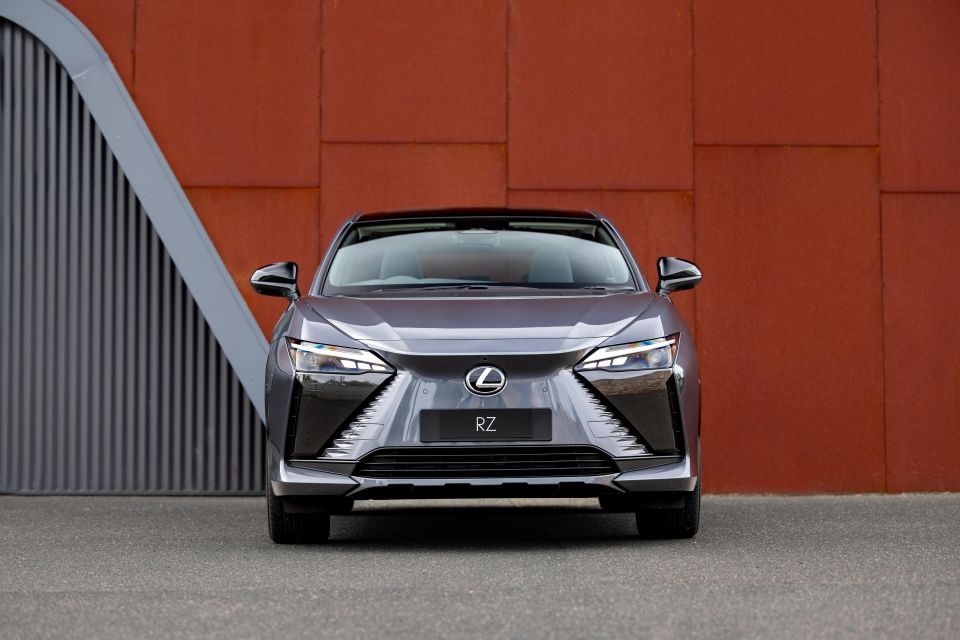
This pricing is line-ball with the likes of the Genesis Electrified GV70, Mercedes-Benz EQC, and BMW iX, but a little higher than the likes of the BMW iX3, Genesis GV60, and substantially higher than the Tesla Model Y.
Although arguably not in the same class, the Kia EV6 GT and Hyundai Ioniq 5 are also in the mix, with prices that undercut the Lexus significantly while delivering higher levels of electrified performance and technology features.
Lexus has for decades proven itself to be the class leader in luxurious and well-finished vehicle interiors.
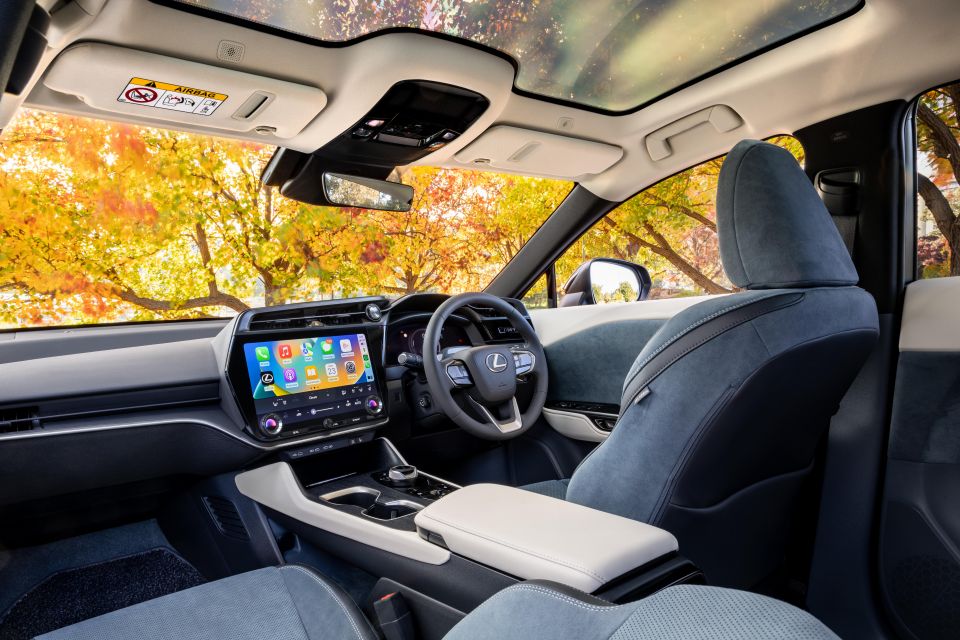
There is a certain level of craftsmanship that is unmistakably Lexus from the original LS in 1989, to the vehicles it still produces today. The Japanese reset what luxury meant from an interior perspective more than 30 years ago, forcing the Germans (and Americans) to up their game considerably.
When it comes to the RZ, the cabin remains a sophisticated and luxurious place to be with super supportive and well-appointed seats with lovely surfaces and vegan leather (if you care).
These are all features that we have come to love, appreciate and expect from Lexus, but – and this is a bigger but than ever before given we are talking about a battery electric vehicle designed to appeal to a younger and more tech-savvy audience – it’s still let down by its technology implementation and peculiar issues that really should not exist in a car of any kind in 2023, let alone an EV.
Lets start with the giant 14-inch infotainment touchscreen. This is an absolutely beautiful high-resolution screen that is well laminated and doesn’t suffer from some previous-generation Lexus model’s visibility issues when under direct sunlight. As a piece of hardware, it’s brilliant.
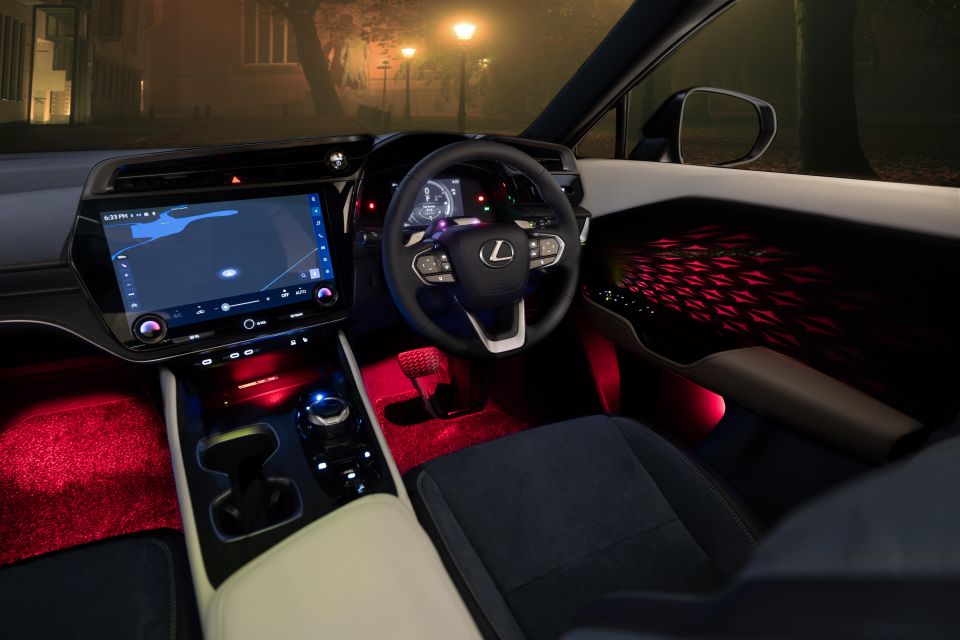

What remains an ongoing concern, however, is the software. It lacks the user-friendliness and intuitiveness of what is offered by BMW’s latest-generation iDrive and Mercedes-Benz’s fantastic MBUX system. Even up-and-coming luxury brand Genesis has managed to work out how to make scrolling through menus and changing options an easier task.
As an example, being able to change the drive modes of the Lexus RZ requires a multi-step deep dive into the menu system, it would really be a lot easier if there was a physical drive mode button, or if the modes were readily available from the screen’s home screen. It’s not like a 14-inch display is lacking in real estate.
Want to change the excellent sound system’s bass while driving? It won’t let you.
The driver monitoring system is also this bulbous camera that sits on the steering wheel column and like a nagging teacher will constantly beep and annoy you to look at the road. During the launch drive of the vehicle, it was so irritating that Lexus staff were turning it off for us before we drove the RZ each time – it restarts automatically when the vehicle is turned on.
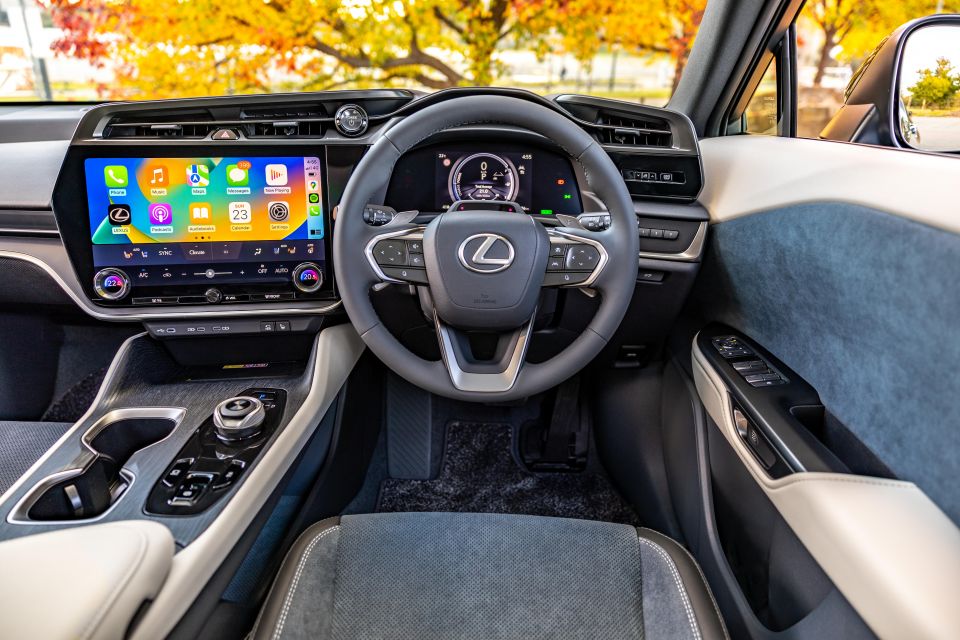
It’s as if someone at Lexus realised that tech-savvy EV buyers love Tesla’s large screens, but then didn’t quite put two and two together to make the software that drives it work as nicely.
What is fascinating about this, is that good in-car software has been around for decades and is available in every device you pick up and use on a daily basis, so getting this not quite right seems like an unnecessary own goal for Lexus.
The native navigation system is also, for lack of a better word, ordinary at best. It seems to lag by a good second or two as to where the car is in the real world, versus where the car is on the screen. This means if you’re in a busy place with lots of streets one after another, it becomes an issue trying to work out which street is the one you’re meant to turn into.
Thankfully it has default support for wireless Apple CarPlay and the USB-C charging system is fast. It does offer wireless phone charging, but in our testing it appeared to have a single coil for the charger so the orientation of our iPhone 14 Pro Max would need to suit its charging location which was somewhat cumbersome.
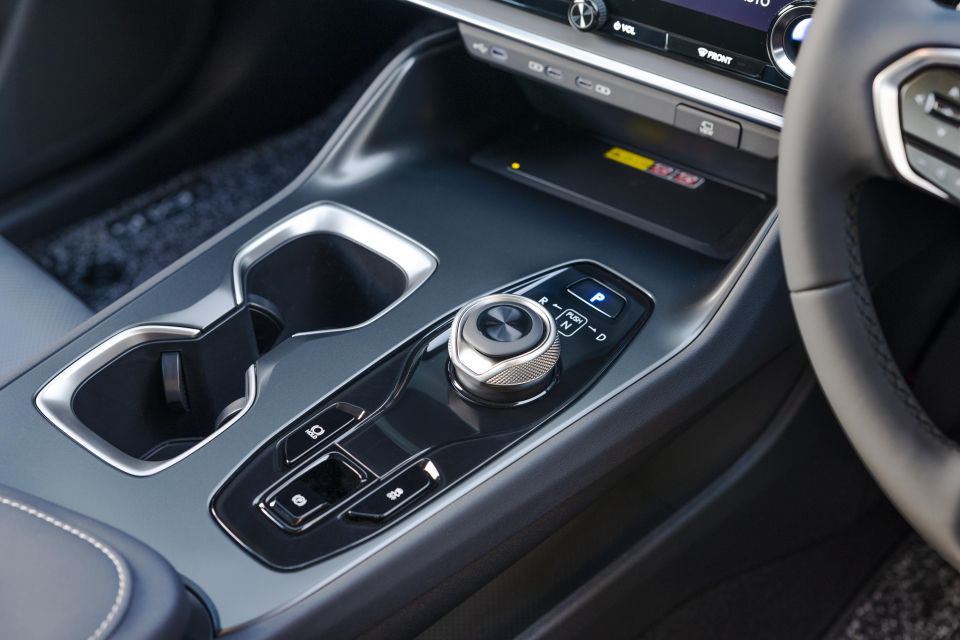
If we can pick on the software just a little more, it’s a similar case with the reversing camera, which has a small lag not only in the visual display, but also in the movement of the steering wheel to the visual lines that display on the screen.
Perhaps the feature that needs the most attention is the digital instrument cluster. While the area behind the steering wheel could easily house a large 10- or even 12-inch display, Lexus has chosen to stick a tiny 4.2-inch screen in the base model and a 7.0-inch screen in the top-spec.
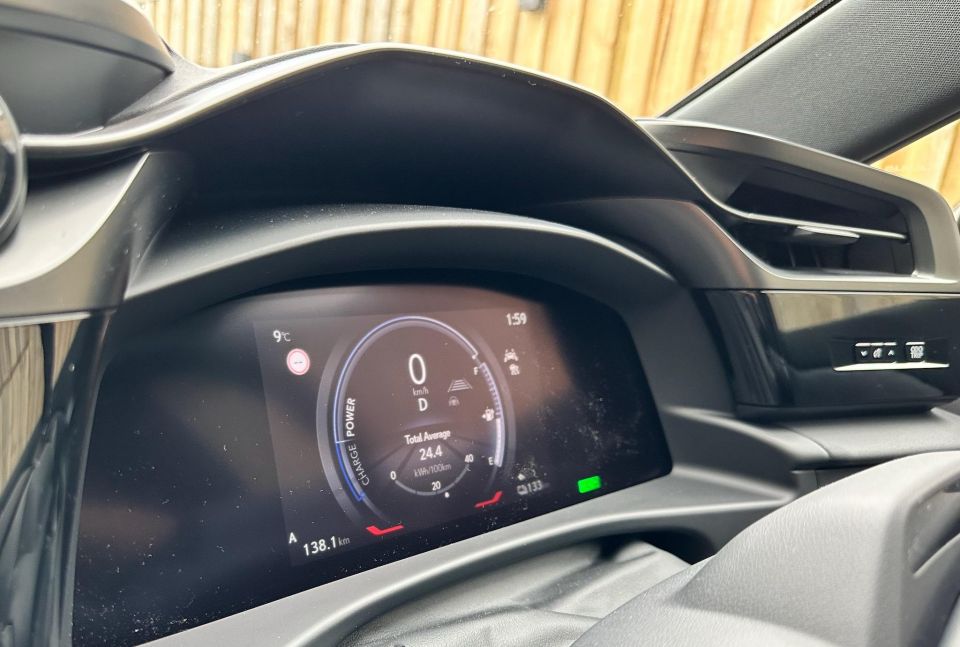
This means on either side of the instrument cluster is nothing but black while the screen only lights up barely half of the available real estate. It looks pretty average and once again, given this vehicle is meant to appeal to tech-savvy buyers, it could be substantially better.
Audi has been doing virtual cockpits for almost 10 years (launched in the TT in 2014), which encompass the entire space behind the steering wheel in a beautiful visual display. Genesis has 3D instrumentation, Mercedes and BMW offer the latest screen technology with full colour and interactive head-up display. Lexus? The screen which you will look at the most, is probably the cheapest part of the car.
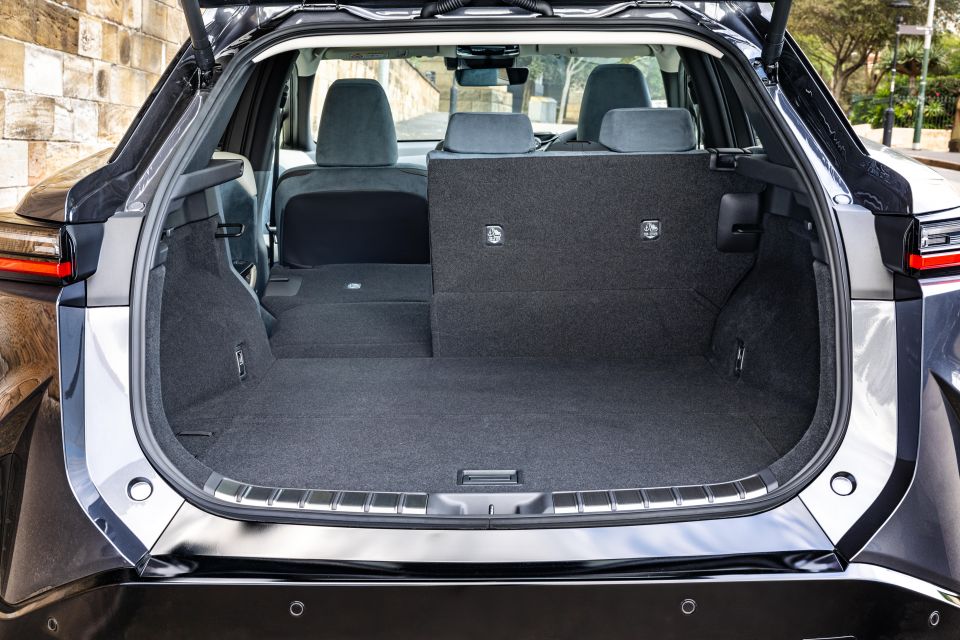
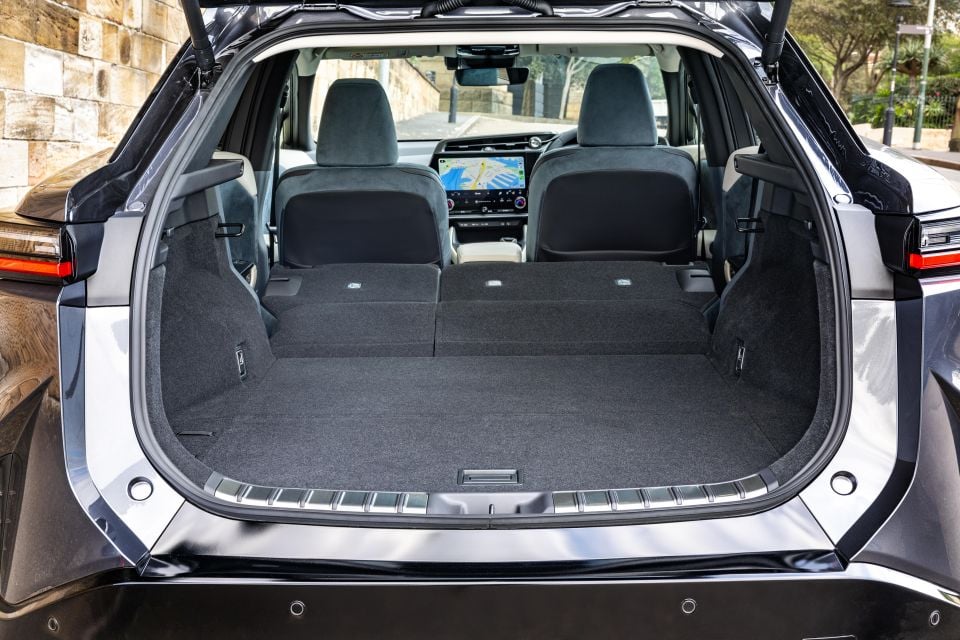
It sounds like we may be nitpicking but this is meant to be a technological tour de force and it simply isn’t.
The good thing is though, that everything else in the Lexus RZ interior is excellent. The seats, the surfaces, the cabin noise and the way it all comes together really does prove why Lexus has succeeded in its craftsmanship still remaining as one of the best in market.
The boot measures 522 litres in capacity (all seats up) or 1451 litres with the second row folded down. Plenty of room for its size.
Both variants of the Lexus RZ are powered by a dual-motor all-wheel drive electric drivetrain producing 230kW of power, which is fed by a 71.4kWh lithium-ion battery pack.
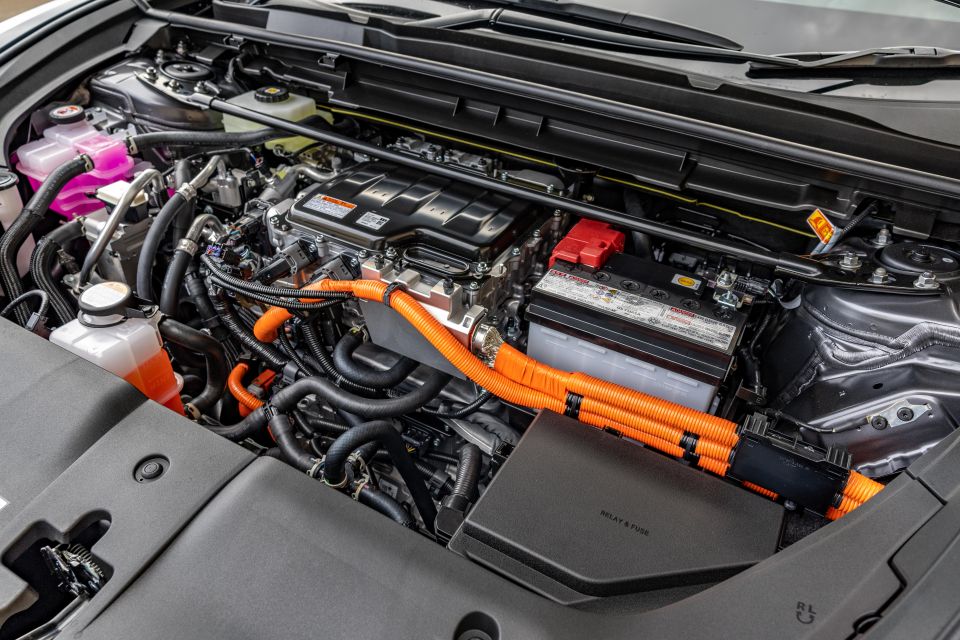
The RZ is claimed to have a combined cycle range of 470km according to lenient ADR testing, which is based on the NEDC protocols.
Lexus claims the RZ can be charged from 0-80 per cent in 30 minutes using a DC fast-charger, whereas it can be fully charged in six-and-a-half hours with a three-phase AC power supply.
Under the bonnet you won’t find any storage, it’s just the electrical components for the drive system, a variable strut tower brace, along with the front motor.
The entire Lexus RZ range comes with the company’s Lexus Encore Electrified Platinum benefits program (three years), which includes Lexus On Demand and complimentary valet parking. All owners also get a complimentary 7kW AC wallbox supplied and installed by Jet Charge.
Installing Lexus’ approved charger will see owners able to charge their RZ from 10 per cent capacity to full in roughly 6.5 hours – which would suggest most owners would simply recharge at home overnight once a week.
However, Lexus will also include a three-year complimentary subscription to the Chargefox rapid DC public charging network for those that prefer to charge on the go.
Unlike some other full battery-electric vehicles, the Lexus RZ doesn’t have a performance variant.
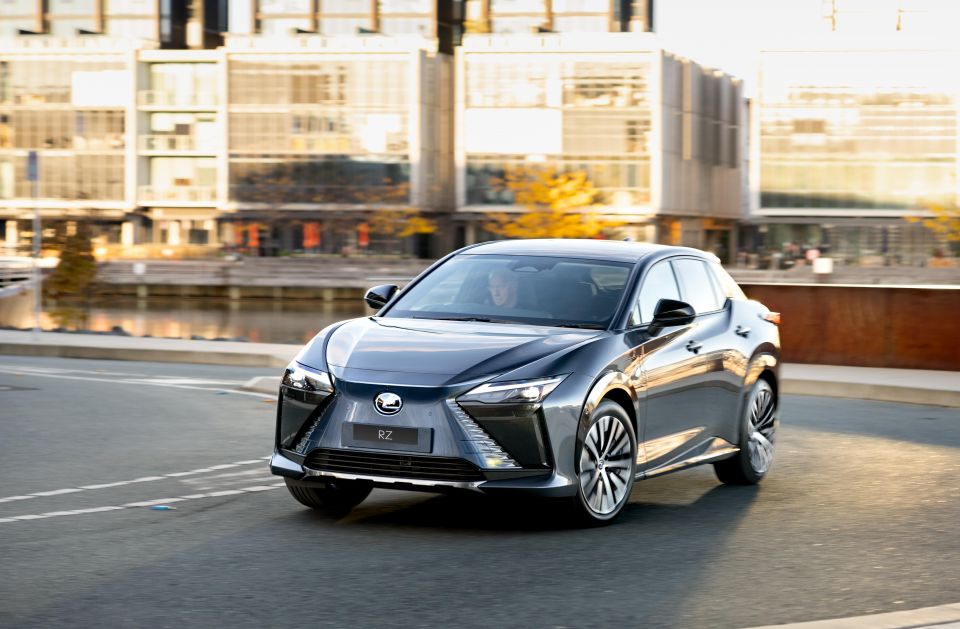
While there is a difference in the wheel size between the Luxury and Sports Luxury, both variants have the same claim of 0-100km/h in a very respectful 5.3 seconds.
Behind the wheel, the RZ proves itself to be a very competent driving machine. It’s smooth without losing its sporty character and yet, when pushed harder and harder around some twisty roads, it feels at home.
It has one of the better steering systems of a modern Lexus and while we eagerly anticipate Lexus’ confirmed wild yoke steering wheel with its steer-by-wire system, it is still about 12-18 months away for our market.
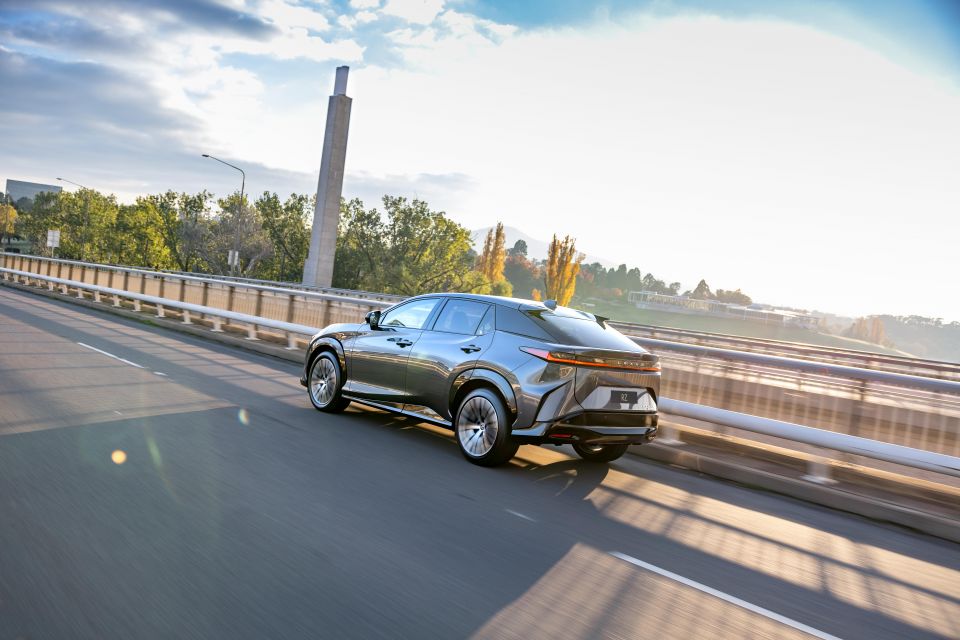
We found the driving dynamics, ride and overall experience behind the wheel to be nothing but positive. It does as it says on the box – provide a quintessentially Lexus driving experience that is advanced, instead of hindered by its electrification.
Being inherently all-wheel drive, the RZ makes use of two eAxle electric motors front and rear, with power outputs of 150kW and 80kW respectively. In similar fashion, torque distribution favours the front with 266Nm versus 169Nm for the rear.
So while it is an all-wheel drive system, it does have a more powerful motor upfront. This front-wheel drive bias isn’t felt much behind the wheel as the RZ drives with a very neutral character and never feels heavy.
The Drive4 system can send up to 100 per cent of torque to the front or rear axle depending on the situation. Lexus calls the motors eAxles due to it integrating the transaxle and inverter. These can then feed off each other to prevent pitch associated with accelerating hard.
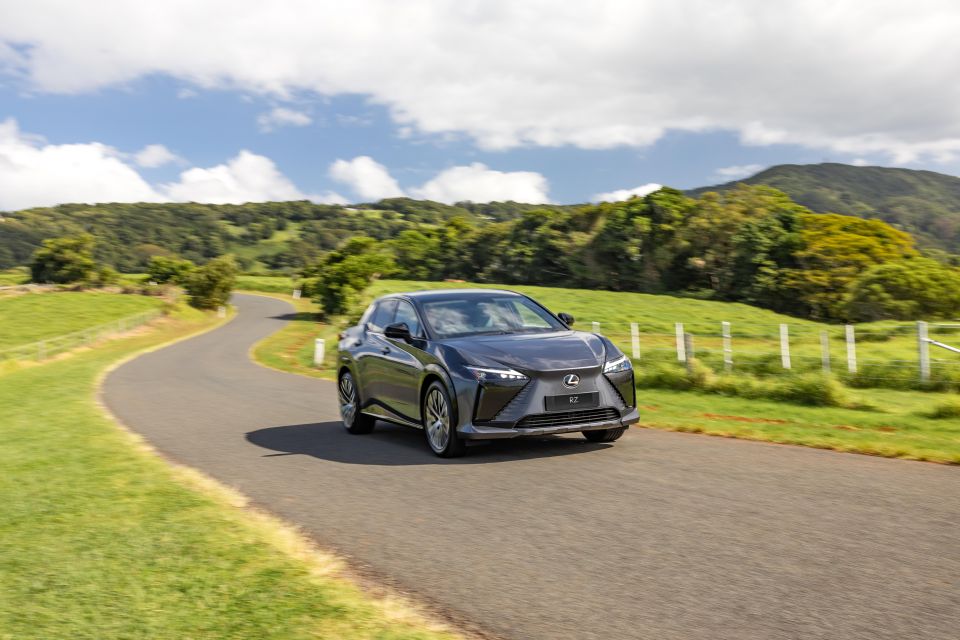
We found the four different driving modes to be a bit of a gimmick, but will help you save power if you’re running low by turning non-essentials off and taking some punch out of the accelerator.
Not that it matters in Australia, but it does have a peculiar limited top speed of only 160km/h.
What we found more disappointing was the lack of single-pedal driving mode, which is a shame given it has now been progressively rolled out amongst a big portion of EVs on the market.
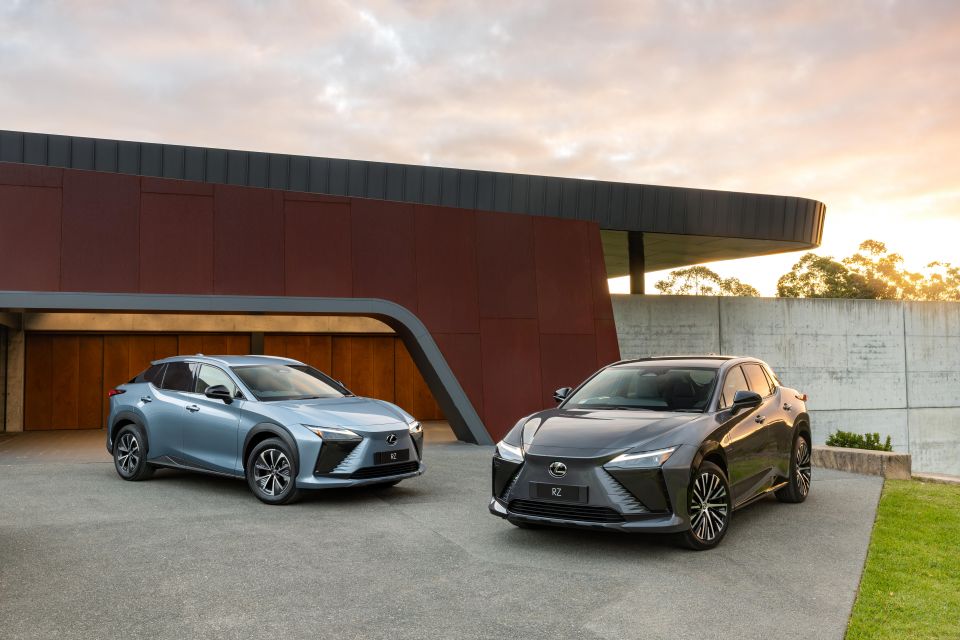
RZ450e Luxury highlights:
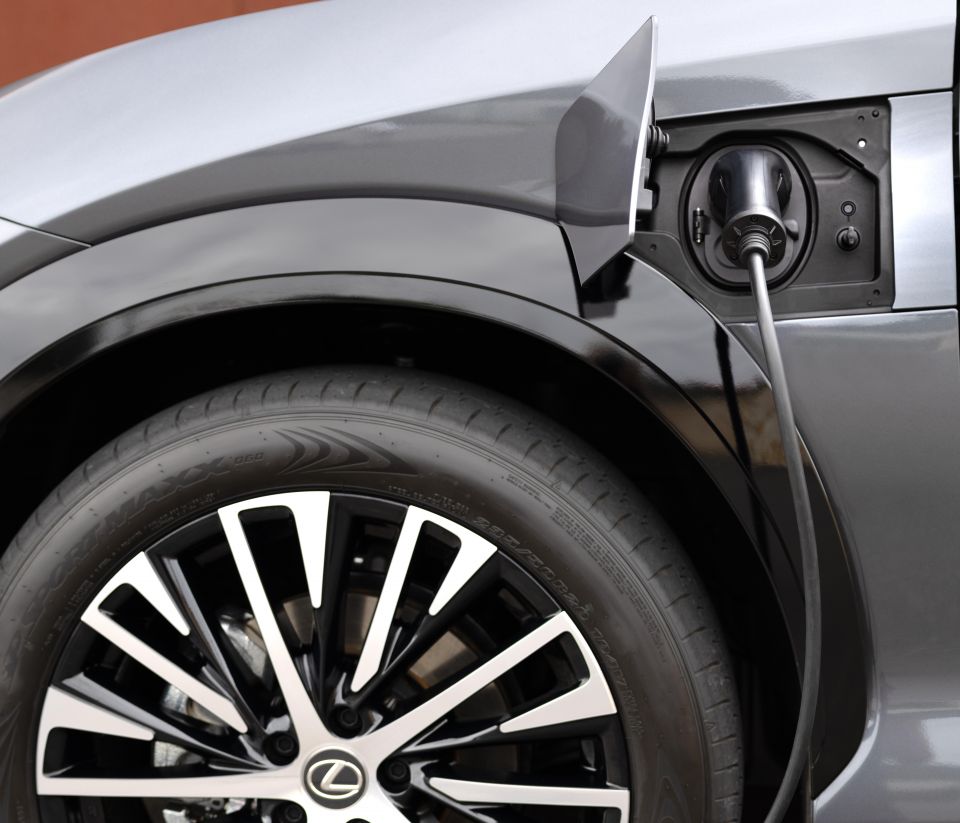
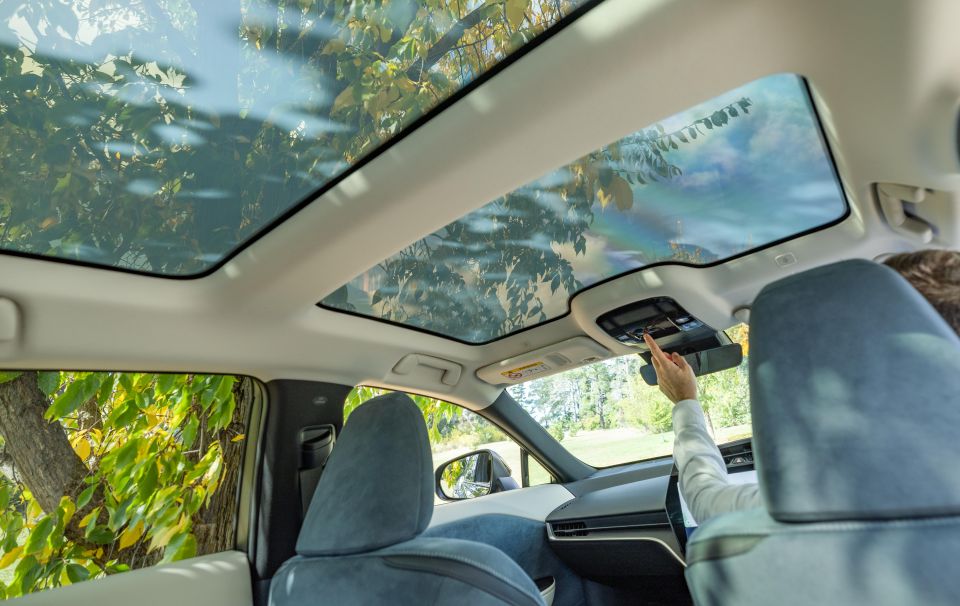
RZ450e Sports Luxury adds:
The Lexus RZ has not been tested by ANCAP or Euro NCAP, and is therefore unrated.
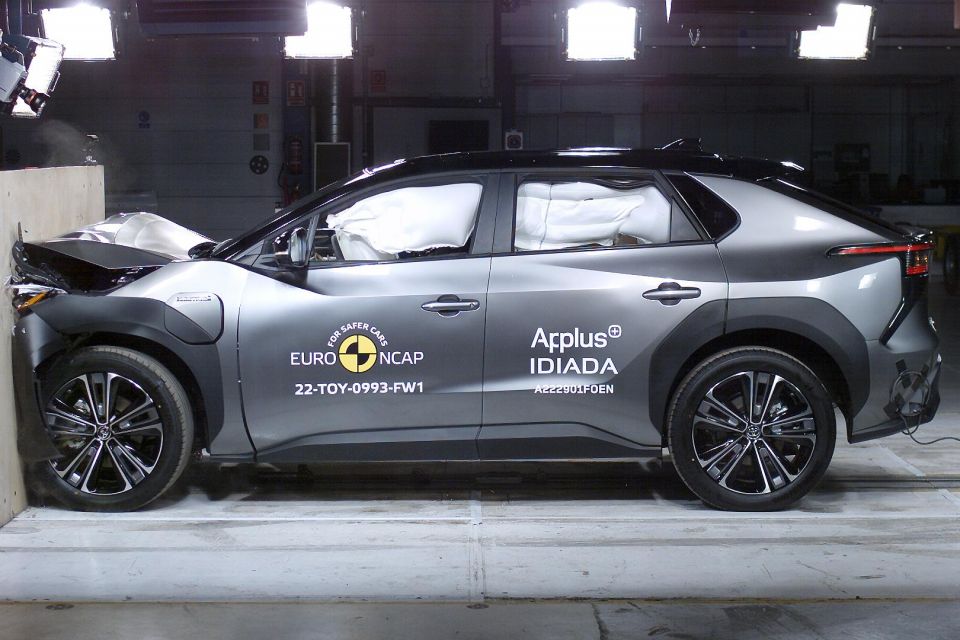
Though we can’t say for sure, it’s pretty evident the RZ would be like any other Lexus and achieve top scores on any crash test that was to be conducted.
Its Toyota bZ4X equivalent has managed a five-star Europe NCAP rating so there is no reason to think the more premium Lexus model would not achieve the same.
Apart from the passive safety systems such as airbags and structural rigidity, Lexus’ latest Pre-Collision System makes use of a millimetre-wave radar and monocular camera sensor for better visibility and collection detection capability.
The adaptive high-beam system on the top-spec model also has some interesting features that are speed dependent – when the vehicle is first driven and the speed exceeds 3km/h, both cornering lamps are switched on for maximum visibility surrounding the vehicle, this turns off automatically after the vehicle reaches 15km/h.
Speeds of 15-30km/h see maximum frontward vision in terms of with and from 30-80km/h that narrows down for normal driving. Speeds above 80km/h sees the headlights further narrow their focus to extend their depth.
A five-year warranty coverage period also extends to the Service Loan Car program, where RZ owners are provided with a complimentary Lexus vehicle during their own vehicle’s service.

Each RZ is available with five years of capped price servicing, at $395 per service. Intervals are 12 months or 15,000km – whichever comes first.
As a car on its own, the Lexus RZ is a fantastic package.

Where it falls short is the price positioning versus competitors from the likes of BMW and Tesla, as well as the software and general interface running the infotainment system and instrument cluster respectively.
There are some really low-hanging fruit that Lexus can apply to the RZ both in terms of a software update and simple hardware improvements, which would make a big difference to the feel and ownership experience of the RZ.
For now though, what you can be sure of is that the Lexus RZ will likely never let you down as an EV or a vehicle in general. So if the technology drawbacks don’t bother you, it should definitely be on the test drive list.

Click the images for the full gallery
MORE: Everything Lexus RZ
Take advantage of Australia's BIGGEST new car website to find a great deal on a Lexus RZ.
Alborz is the founder of CarAdvice (sold to Nine and now Drive) and co-founder of CarExpert. He is an honourary adjunct professor & entrepreneur in residence at the University of QLD. He loves naturally-aspirated V8s, V10s and V12s and is in denial about the impending death of the internal combustion engine. The best way to reach him is via Instagram.


Angus MacKenzie
5 Days Ago
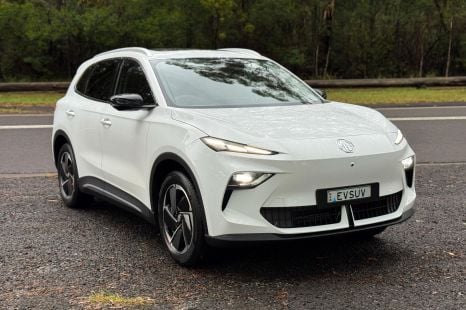

Matt Campbell
4 Days Ago


James Wong
3 Days Ago
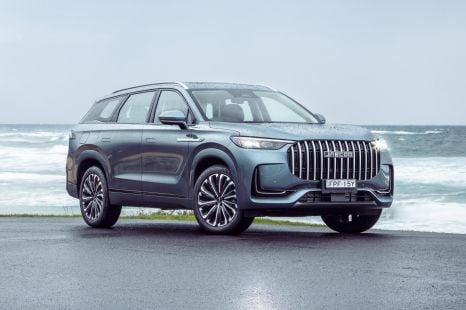

William Stopford
2 Days Ago
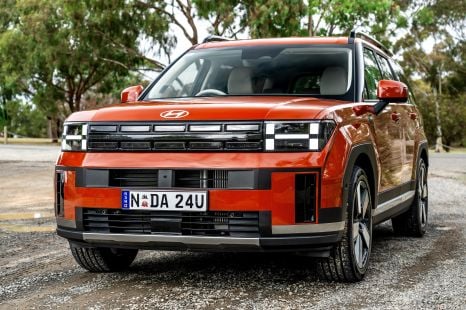

Max Davies
1 Day Ago
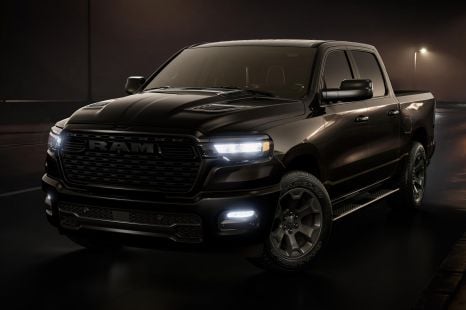

William Stopford
19 Hours Ago